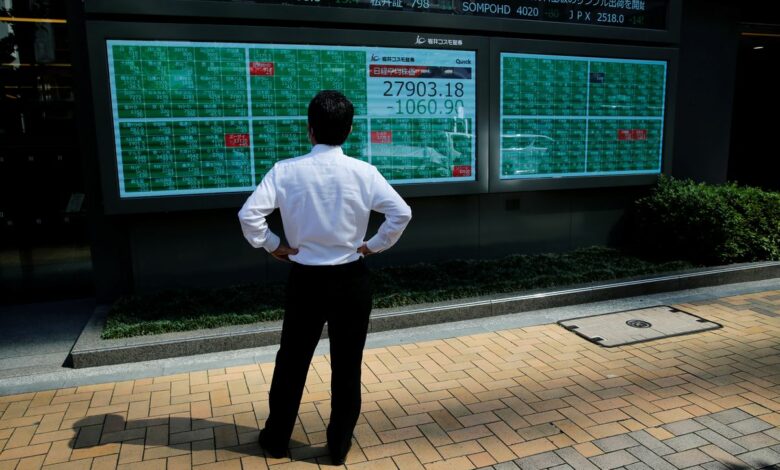
LONDON, July 6 (Reuters) – Oil prices were heading towards three-year highs on Tuesday, towing petrocurrencies and bond yields with them, after the world’s main oil producers failed to agree on production plans.
Europe’s stocks spluttered at the prospect of faster inflation. China had spooked its tech sector too with another high profile clamp down , but the main action was all around the black stuff.
The Organization of the Petroleum Exporting Countries (OPEC) and its allies, a group known as OPEC+, were forced to abandon talks on Monday after the United Arab Emirates had rejected a proposed eight-month extension to output curbs.
Some OPEC+ sources said there would be no oil output increase in August, while others said a new meeting would take place in the coming days and they believed there will be a boost in August.

Crude traders were not hanging around to find out. They pushed Brent up as far as $77.66 – the highest level since October 2018 – and US crude to its highest since late 2014 at $76.90 a barrel. Oil is up roughly 50 percent this year and over 385 percent since last year’s COVID-driven slump.
“Without an injection of some extra barrels of oil in the coming weeks, given the tightness of the market, Brent might cross the USD 80/bbl threshold,” UniCredit’s analysts said.
The main petrocurrencies loved it. Norway’s crown, the Canadian dollar and Russia’s rouble all rose. The Australian and New Zealand dollars climbed too as the Aussie central bank pared back stimulus, although like many of its peers it did its best to dampen interest rate rise talk. read more
Back in Europe’s stock markets, the oil sector was one of the only ones to make ground. It was up 0.5 percent whereas the region’s STOXX 600 sagged 0.2 percent.
“Slowing growth, rising inflation and less expansive monetary policy could act as a dampener on equity markets and riskier corporate bonds,” Pictet Asset Management’s chief strategist Luca Paolini said.
TECH PROBLEMS
Overnight in Asia, MSCI’s broadest index of Asia-Pacific shares outside Japan (.MIAPJ0000PUS) had inched up 0.1 percent having spent the session in and out of the red.
Japan’s Nikkei (.N225) finished up 0.2 percent but Australia’s S&P ASX200 (.AXJO) reversed following the RBA’s decision to keep interest rates on hold and Hong Kong (.HSI) marked its sixth day of losses and China’s CSI300 (.CSI300) at an almost two-month-low.
It came after the Cyberspace Administration of China ordered an investigation into ride-hailing giant Didi (DIDI.N) just days after it listed on the New York Stock Exchange.
In pre-US market trading the firm’s shares which had been valued at up to $75 billion as of Friday, were down 25 percent.
“There is still lingering uncertainty from China’s tech companies and they are prominent in the Asian market, so that could be a cloud for market sentiment,” said Tai Hui, JPMorgan Asset Management chief Asia market strategist.
“The tech sector is very significant in Asia and we are not going to have a lot of clarity on the regulatory adjustments in China for the next few weeks or even months and (that) will be an important driver for the market.”
Investor appetite for Chinese tech companies could be tested by Xiaomi Corp (1810.HK) mandating 12 banks on Tuesday to lead a potential US dollar debt issuance.
Globally, the publication of the US Federal Reserve’s Federal Open Markets Committee minutes for June on Wednesday is highly anticipated by investors for guidance on whether ongoing emergency stimulus measures could start to be tapered.




